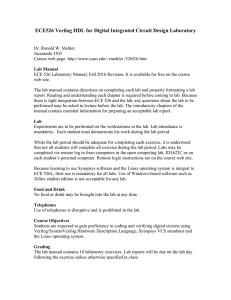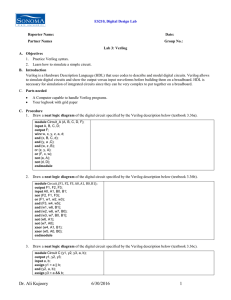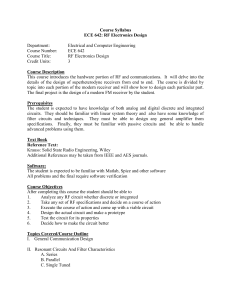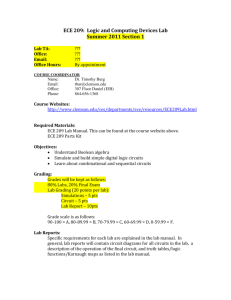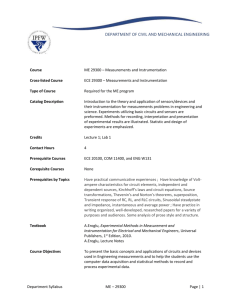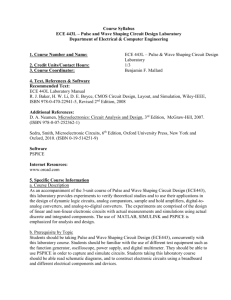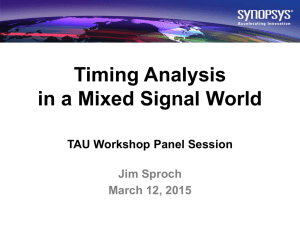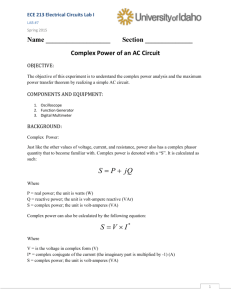ECE 527
advertisement
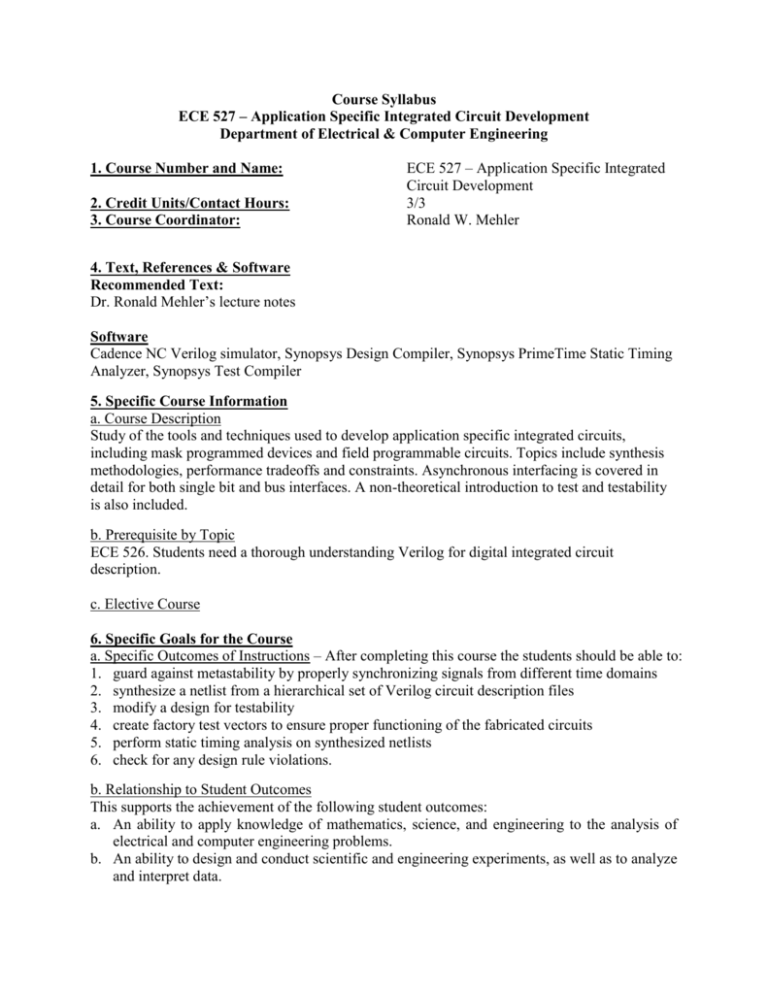
Course Syllabus ECE 527 – Application Specific Integrated Circuit Development Department of Electrical & Computer Engineering 1. Course Number and Name: 2. Credit Units/Contact Hours: 3. Course Coordinator: ECE 527 – Application Specific Integrated Circuit Development 3/3 Ronald W. Mehler 4. Text, References & Software Recommended Text: Dr. Ronald Mehler’s lecture notes Software Cadence NC Verilog simulator, Synopsys Design Compiler, Synopsys PrimeTime Static Timing Analyzer, Synopsys Test Compiler 5. Specific Course Information a. Course Description Study of the tools and techniques used to develop application specific integrated circuits, including mask programmed devices and field programmable circuits. Topics include synthesis methodologies, performance tradeoffs and constraints. Asynchronous interfacing is covered in detail for both single bit and bus interfaces. A non-theoretical introduction to test and testability is also included. b. Prerequisite by Topic ECE 526. Students need a thorough understanding Verilog for digital integrated circuit description. c. Elective Course 6. Specific Goals for the Course a. Specific Outcomes of Instructions – After completing this course the students should be able to: 1. guard against metastability by properly synchronizing signals from different time domains 2. synthesize a netlist from a hierarchical set of Verilog circuit description files 3. modify a design for testability 4. create factory test vectors to ensure proper functioning of the fabricated circuits 5. perform static timing analysis on synthesized netlists 6. check for any design rule violations. b. Relationship to Student Outcomes This supports the achievement of the following student outcomes: a. An ability to apply knowledge of mathematics, science, and engineering to the analysis of electrical and computer engineering problems. b. An ability to design and conduct scientific and engineering experiments, as well as to analyze and interpret data. c. An ability to design systems which include hardware and/or software components within realistic constraints such as cost, manufacturability, safety and environmental concerns. e. An ability to identify, formulate, and solve electrical and computer engineering problems. g. An ability to communicate effectively through written reports and oral presentations. k. An ability to use modern engineering techniques for analysis and design. m. An ability to analyze and design complex devices and/or systems containing hardware and/or software components. 7. Topics Covered/Course Outline 1: Design issues. Clock crossings, metastability, synchronization, FIFOs. Clocks and resets. 2: Introduction to synthesis. Synthesis libraries, commands, constraints, scripts. Hierarchy and bottom-up methodology. 3: Test and testability. 4: Scan and BIST. Scan insertion using automated tools. Black boxes and IP cores. 5: Static timing analysis. 6: Physical design, place and route 7: Design rule checking. 8: Putting the final package together for release to the foundry. Prepared by: Ronald W. Mehler, Professor of Electrical and Computer Engineering, October 2011 Ali Amini, Professor of Electrical and Computer Engineering, March 2013
